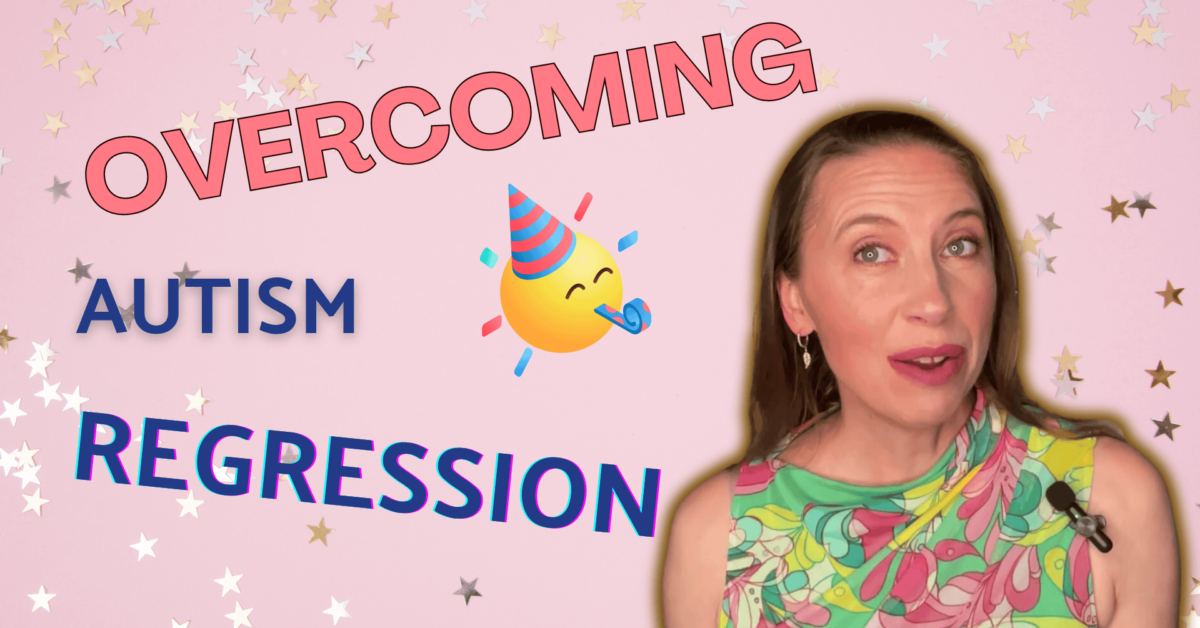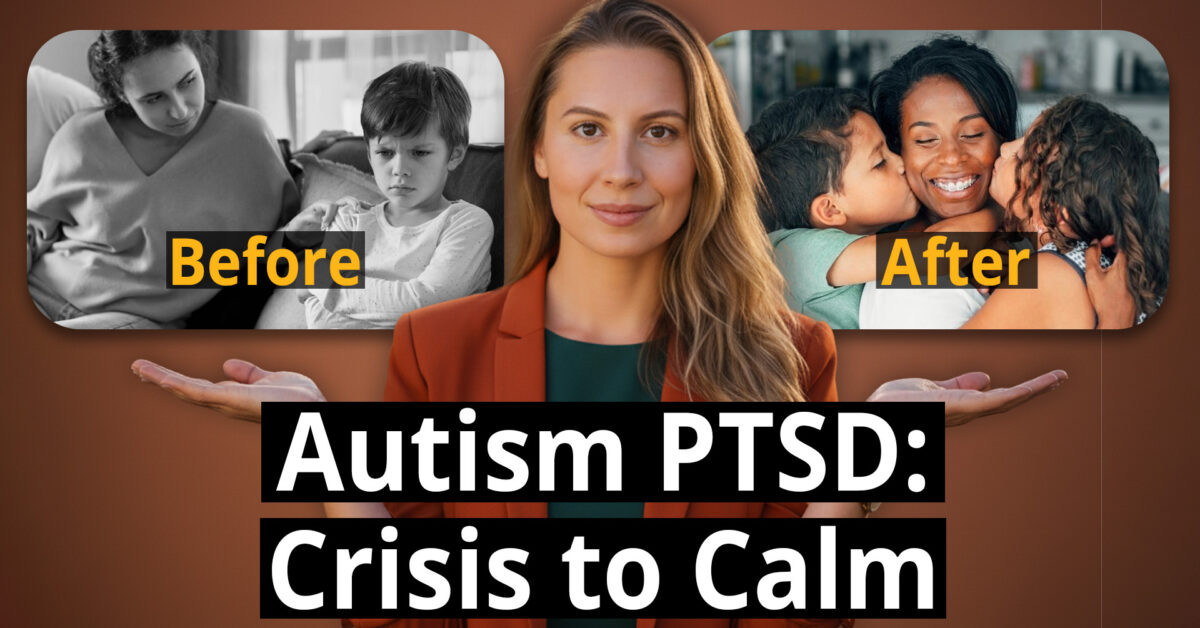What we’re talking about today is not the initial regression that parents see before they get the diagnosis.
What we are focusing on here today is when parents start taking action, making diet changes, doing lab work, targeted therapies, education interventions, etc, all those things, and they start to see their child improve with what they’re doing, and then a regression happens.
The dark (inner) side
Now, this is definitely heartbreaking. Let’s talk about it. The situation becomes an emotional roller coaster, and it’s not the fun kind. I’m speaking from personal experience for sure.
The little voice in our head starts talking. “See, you really don’t know what you’re doing. Why did you think things could get better? You’re a fool. Why did you even try? You need to be realistic. Life is going to be hard forever. They will never be independent.”
That’s your little voice talking, right? You hear it when that regression happens.
The bright side
But in order for there to be a regression, there had to have been some forward movement. So your child was improving, but now they’ve regressed. Is all that improvement lost forever? No.
Two types of regression
There are two types of regression commonly seen when healing your child from autism, and each one actually has a great benefit. But most times it’s very hard to see a benefit because we get so emotional and triggered by regression.
The first type of regression: Two steps ahead, one step back
The first type of regression is from when you introduce a new aspect of healing, like
- a large diet change, or
- maybe a small diet change – many times when you’re starting to add things back into the diet- or
- some type of maybe functional medicine treatment you’re doing, or a new educational approach.
It is actually quite common if you implement any of these changes to see a regression in your child. You’ll see initial improvement and then a regression. However, regression doesn’t always happen, especially at first.
These types of regressions are common in the first year or so of improving health. You can think of it as your child’s body clearing things out. There are many scientific ways to explain it, depending upon what new aspect of healing you just introduced, but I’m trying to keep it a bit general here.
When people discuss change, they often use the metaphor of sweeping. When you sweep a dirty floor, lots of dirt gets stirred up first, gets kicked around. But if you keep sweeping, eventually, the floor will be clean. If you stop when you’re in that process of kicking everything up, you still have a dirty floor. Now, I never liked that metaphor because my daughter, she’s not a dirty floor. However, I understand the meaning.
Adverse reactions
It’s important to monitor this type of regression, and you want to make sure that it is not an adverse reaction to this new way of improving health.
An example of an adverse reaction would be, let’s say, detoxing from mold too quickly, and your child is not able to eliminate the toxins quick enough. There’s more of this buildup in the body that ends up making them not feel good. This is technically an adverse reaction and not a regression, so it’s important to understand the difference.
The second type of regression: Stress and anxiety
The second type of regression is a reaction to stress, typically. Stress can be a wide variety of things:
- deviating from their special diet and eating foods that cause inflammation, a.k.a. some type of birthday party they went to, or
- moving to a new home, a new school,
- a new teacher,
- a substitute teacher,
- ingredients change in a supplement…
There’s some type of stress. With this type of regression, you’re moving forward, you’re healing your child nicely, health is improving. Many times a day, you might think, “I got this”, and then something happens.
Analyze and act
The best thing to do with this regression is to figure out what is causing your child stress and intervene. Start analyzing. Did yeast increase from that food they ate at the birthday party? Did the anxiety increase because now they don’t know who their teacher is going to be at school? Did sleep issues come back?
Since you’ve been healing for a while, you start to know a few tricks. You start to know what to do to get your child back on track. You start to see these early warning signals.
Bonding
Talking to your child about all this, even if they’re nonverbal, they’re listening to you. They’ll communicate in other ways. Let them know you’re working on fixing the problem.
The benefit of this type of regression is you and your child bond more and you become closer. Trust increases, and then once you solve the issue again, you’re going to gain so much confidence, and you need that confidence, keep going.
Have faith
Regressions don’t need to be permanent. So much goodness can come out of a regression, but you have to have the faith to keep going. Confused by all the information about autism? I’ve got you. Click the link to see how we can work together. Let me break down the science and provide you with clear, actionable steps to make your path forward easier.
A good quote from Martin Luther King Jr. is,
“Faith is taking the first step even when you don’t see the whole staircase.”
And with autism, you’re not going to see the whole staircase. And it’s even harder to see that staircase during a regression. But it’s there. Have the faith to keep going.




